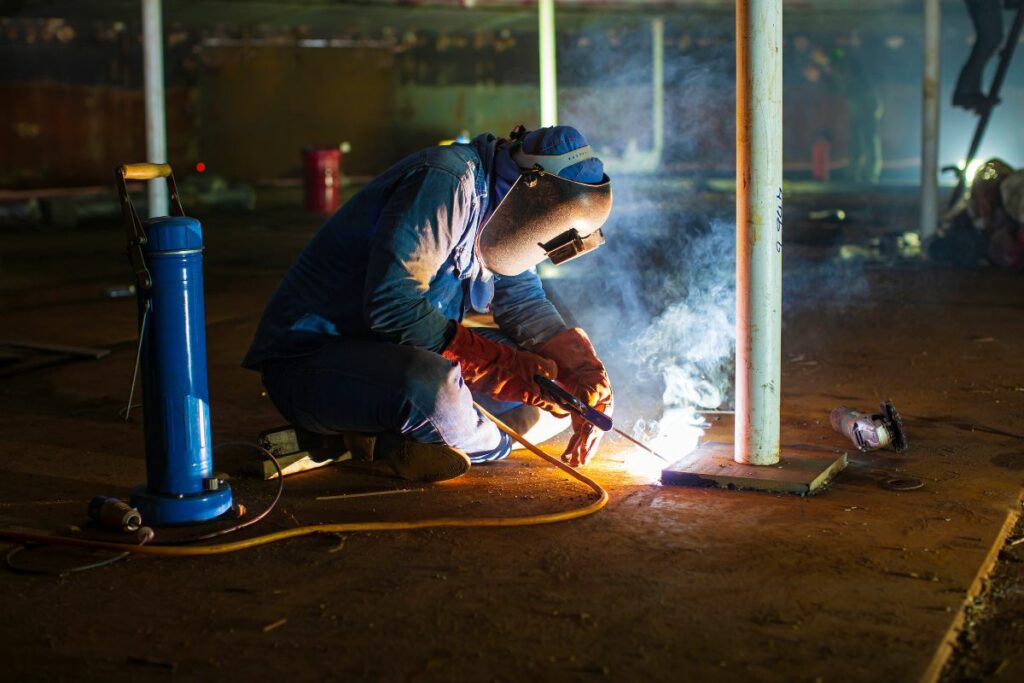
Welding is a highly technical craft reserved for the skilled and qualified. Rightfully so, they deal with many hazards in the workplace. Regardless of years spent honing the craft, welders must adhere to universal precautionary measures. From protective gear to workplace organisations, maintaining a safe environment is crucial for every welder’s well-being. With proper training and adherence to safety protocols, welders can confidently navigate their craft while minimizing risks and ensuring long-term health and safety.
We’ve rounded up some key pointers to note when it comes to health and safety for welders.
The respiratory hazards of welding are well-documented. Even seasoned welders must priorities respiratory protection to guard against the harmful fumes and gases released during the process. Over time, cumulative exposure can lead to serious respiratory issues, making it imperative to never compromise on proper ventilation and Personal Protective Equipment (PPE).
The intense heat and ultraviolet radiation generated during welding can cause severe burns and long-term skin damage. From minor discomforts like sunburns to more severe conditions such as “welder’s flash” safeguarding the skin a paramount. Regardless of experience, welders should invest in high-quality flame-resistant clothing, gloves, and helmets with appropriate filters to shield themselves from these risks.
Welding environments are notoriously loud, with noise levels often exceeding safe limits. While trainees may initially be more susceptible to the dangers of noise-induced hearing loss, experienced welders are equally vulnerable. Consistent exposure to high decibel levels, without adequate protection can lead to permanent hearing damage. Therefore, prioritizing the use of earplugs or earmuffs designed for welding environments is essential for all welders.
Beyond the visible hazards, welding also exposes workers to potentially toxic metals present in welding materials, Chromium, nickel, and manganese are among the most concerning, with prolonged exposure increasing the risk of respiratory diseases, neurological disorders, and even cancer. Regardless of experience, welders must remain vigilant, opting for materials with lower levels of hazardous metals and adhering to strict hygiene practices to minimize the risk of metal poisoning.
Regardless of their tenure in the field, welders should actively seek out opportunities for ongoing training and education in health and safety practices. Staying updated on the latest techniques, regulations, and advancements in protective equipment ensures that welders can continue to ply their trade safely and effectively throughout their careers.
In the world of welding, where equipment meets excellence, maintenance becomes the cornerstone of reliability. Regular maintenance ensures that your tools remain in peak condition, ready to tackle any task with precision and ease. By prioritizing equipment maintenance, not long contributes to a safer working environment but also extends the lifespan of the tools, reducing the risk of unexpected breakdowns.
Whether you’re a novice welder looking to start your career or an experienced professional seeking to enhance your skills, the Welding Academy offers a supportive learning environment where you can thrive.
While welding is a valuable skill with widespread applications, its essential to priortise health and safety to protect the well-being of welders. By understanding the health risks associated with welding and implementing preventive measures such as proper ventilation, PPE usage, and comprehensive training, can create a safer working environment for welders everywhere. To embark on your journey to becoming a skilled and safety-conscious welder, consider training with the Welding Academy.